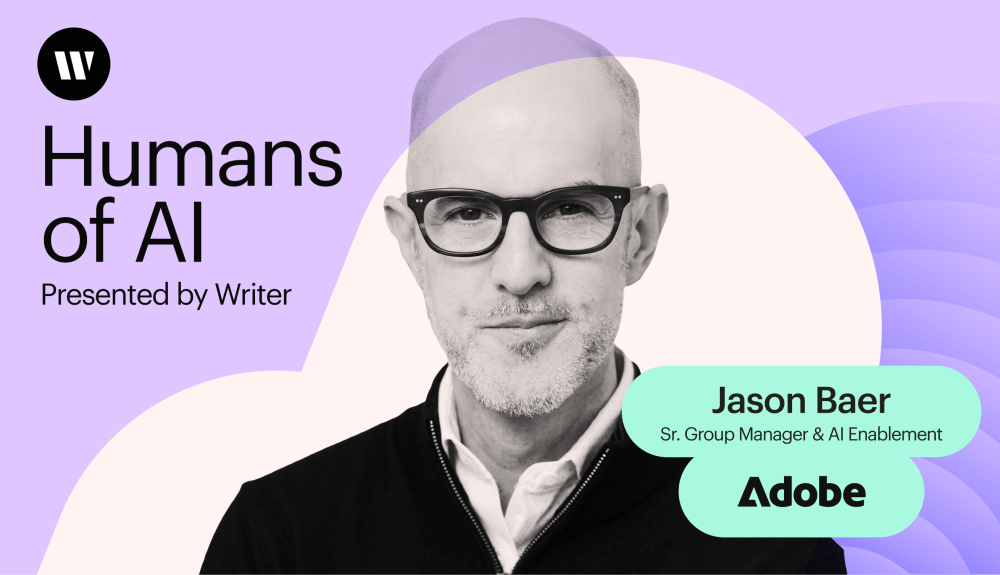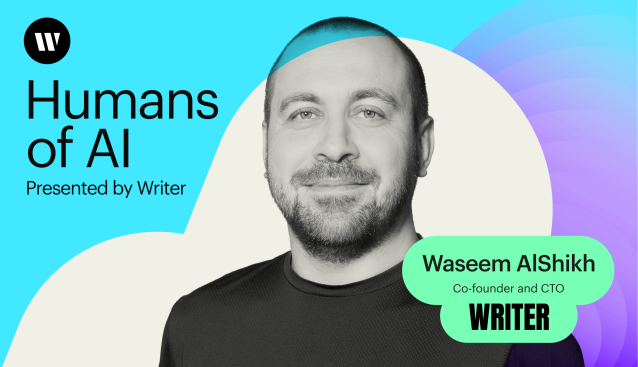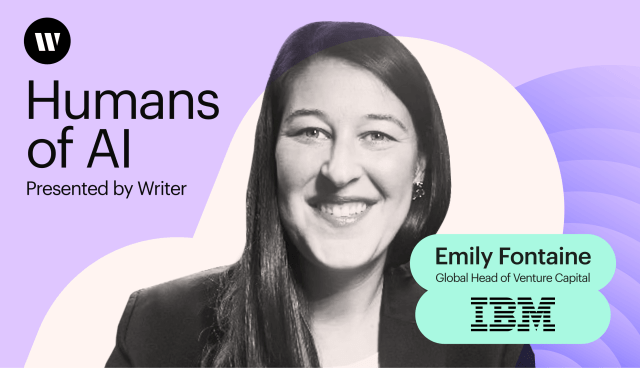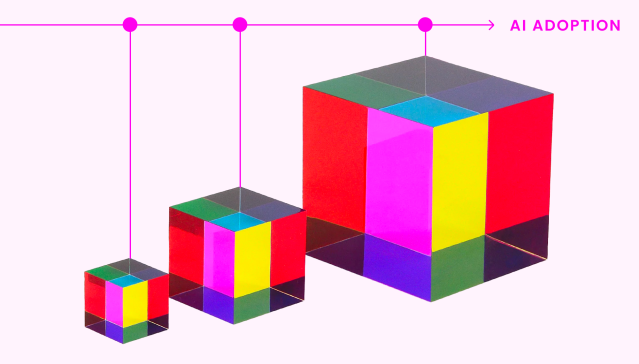Humans in the loop
– 9 min read
Driving AI adoption at Adobe with Jason Baer

Success rarely comes without setbacks. The leaders who achieve the most are often the ones who’ve faced the toughest failures — learning, adapting, and pushing forward along the way. Without failure, there’d be no comeback stories, resilience, or true growth.
In this episode of Humans of AI, we talk with Adobe’s Senior Group Manager of Digital Strategy and Global AI Enablement, Jason Baer. He knows firsthand that failure isn’t the opposite of success — it’s a crucial part of it. Jason’s career journey — from the dotcom era to leading AI initiatives at Adobe — is a compelling tale of adaptability, resilience, and the power of continuous learning. In this episode, he shares his insights on driving AI adoption, overcoming resistance, and AI’s profound benefits in improving both efficiency and work quality.
- Early career failure taught Jason the importance of building a solid foundation and embracing failure as a learning opportunity, which has fueled his resilience and success.
- Overcoming resistance to AI adoption requires the right messaging and hands-on experience, with thought leaders suggesting a 10-hour engagement to realize AI’s potential.
- To drive AI adoption at Adobe, Jason implemented an AI ambassador program. He enlisted 50 global employees to identify and share AI use cases, leading to increased buy-in and productivity.
- The true value of AI at Adobe went beyond time savings, enhancing the quality of work and driving revenue growth.
- Jason’s creation of AI agents, like one that generates business cases, showcases AI’s potential to transform mundane tasks into strategic opportunities.
A journey dating back to the dotcom era
After college, Jason set his sights on joining the tech industry. Unlike other fields, he thought tech promised a future where he could always find his place.
“The reason I made that bet was very deliberate, and I’ve stuck with it ever since. I realized that finance or legal or writing might change and evolve,” Jason explains. “Who knows the twists and turns, but I knew that if tech changes and I work in technology, then that’s gonna be a road that I can really follow all the way through, and that bet has really paid off.”
His career began during the dotcom boom of the late ’90s, working in data centers and building the internet’s foundational infrastructure. As the industry shifted to cloud computing and SaaS, Jason stayed ahead by adhering to three key principles: continuous education, a strong business network, and an open mind.
He took marketing technology courses at UCLA, relied on his connections in Los Angeles, and embraced new opportunities. These efforts paid off when he landed a job at Marketo, now part of Adobe.
Eight years later, Jason still thrives at Adobe, proving that staying true to his principles has been the key to his success. “I think it’s just really knowing what’s important to you, sticking to that, and I think things kinda work out,” he says.
Using failure as a catalyst for success
Things rarely work out on the first try, though. Jason’s resilience and success in the tech industry traces back to a significant failure early in his career. Right out of college, he started his own company, which ultimately didn’t work out. This experience taught him the importance of building a solid foundation to avoid repeating past mistakes.
“I think failure really brought me to ‘What do I need to do? What do I need to create that’s solid so that going forward, you know, we’re gonna find success,’” he shares. “And I think the failure really fueled me. I think it fueled me more than anything in my career.”
Jason learned to embrace failure, seeing it as an essential part of the tech world, where innovation often requires taking risks.
“I can spot it early, and I’m okay with it. It’s part of my DNA,” he says. Unlike those who struggle with failure after a string of successes, Jason sees it as a healthy part of the process. “Let’s just fail fast and move on,” he adds, highlighting a mindset crucial to his ongoing success.
Mistakenly approaching AI as a one-size-fits-all solution
When Jason’s team started experimenting with AI, their first big mistake was treating AI as another generic tool. They focused on how to use prompts, but this approach got pushback. He says people started asking, “How does this pertain to my role?”
So, they shifted their strategy. They looked at specific roles, like business development representatives (BDRs), who are responsible for generating prospecting emails and leads. They broke down the most common use cases — research, writing emails, follow-ups, and scheduling calls.
The turning moment came when they showed how AI could speed up these tasks, cutting them from an hour to just five minutes. BDRs saw the potential to generate more leads than ever before.
“That was the light bulb moment where BDRs were like, ‘Sign me up. Let’s do AI,’” Jason says.
Gaining buy-in for AI adoption
To Jason, AI is just the latest wave in technological advancements.
“It’s no different from building websites, e-commerce, mobile, or social,” he says. “AI is just the next big thing, and I don’t treat it any differently.”
According to Jason, a year or two ago, AI had many mistakes. But he believes it has improved significantly and will only get better. To drive AI adoption at Adobe, he’s spearheaded an AI ambassador program. This program enlists 50 people globally, across all geographies and sales roles, to identify manual tasks that AI can now handle.
These ambassadors share their success stories within their teams, showcasing the time savings and potential for more revenue-generating activities. “People are starting to see the light and really use it,” Jason notes.
Overcoming resistance and scaling adoption
Adobe has AI dialed in on a large scale, with a long history of AI integration. However, when it came to day-to-day usage, they faced late adopters — people resistant to using AI. The overarching advice was simple: learn AI.
One key message was that while AI might not take your job, becoming an AI expert could protect your role. It’s a sentiment shared by a previous HoAI guest, Vizient’s Steve Waldon.
For late adopters, Jason drew inspiration from Ethan Mollick, a UPenn professor and thought leader. Mollick advised spending 10 hours using AI for daily tasks.
“Once you have that light bulb moment where you figure out, like, that used to take me five hours, and now it takes me 30 minutes — that’s when we all get hooked,” Jason says. “So I’m just trying to be patient with the late adopters, knowing that at some point they’ll have the light bulb moment.”
Going beyond time savings
Initially, Jason’s team thought the end goal was that AI would save a ton of time — but they soon realized that wasn’t the right focus. It was what they would do with that time saved.
“We’ve done some time studies where we actually timestamp their work manually and with AI and, and I think 20 to 30% [time savings] is realistic, and I think it’s conservative,” he says. “We’re seeing that people are open to taking that time and reallocating it to revenue producing activities.”
Building AI agents for meaningful work
Jason found AI agents especially fascinating because they don’t just answer questions but also handle mundane tasks, freeing him and his coworkers to focus on more meaningful work. He spends much of his day experimenting with different technologies, building agents, and developing new capabilities.
Jason’s team builds business cases — a presentation or document that argues why a specific product or service is the best solution to a client’s problem. While he could reliably accomplish this using a chatbot with prompts, he wanted to solve it with full automation.
“I was able to build an agent where I could say, ‘Build me a business case,’” he says. “And it’s trained on enough data that it can produce a formidable one-page business case completely automated…Our world is gonna change. AI is totally a movement and totally overhauling the way we work.”
Embracing AI’s unique approach
Jason is paying his AI knowledge forward, teaching the first-ever course on AI at UCLA Extension (UCLAx). They’re also launching a new series next quarter, covering prompt engineering, advanced prompt engineering, building chatbots, and building agents.
UCLA has a rich history of AI research. Back in the ‘50s and ‘60s, researchers aimed to replicate the human brain with AI, but the mindset is different now. We need to embrace different approaches AI has, as it can help us explore new possibilities and offer suggestions for doing things that we would never have thought of on our own, like when AI beat the world’s greatest Go player.
“There was a move, it was the 37th move, and when all the Go experts kind of replayed the tape on that move, they said, ‘No human Go player would ever make that move,’” Jason explains. “But it won. And that was the defining moment that won that match.”
Jason’s journey from the dotcom era to his current role at Adobe is a powerful reminder that the key to success lies not just in embracing the latest tools, but in understanding how they can serve and enhance human capabilities.
So, what will our move 37 be that we learn from the advancement of AI?
Want to hear more stories from the humans working at the crossroads of business and generative AI? Subscribe to Humans of AI wherever you listen to podcasts.


